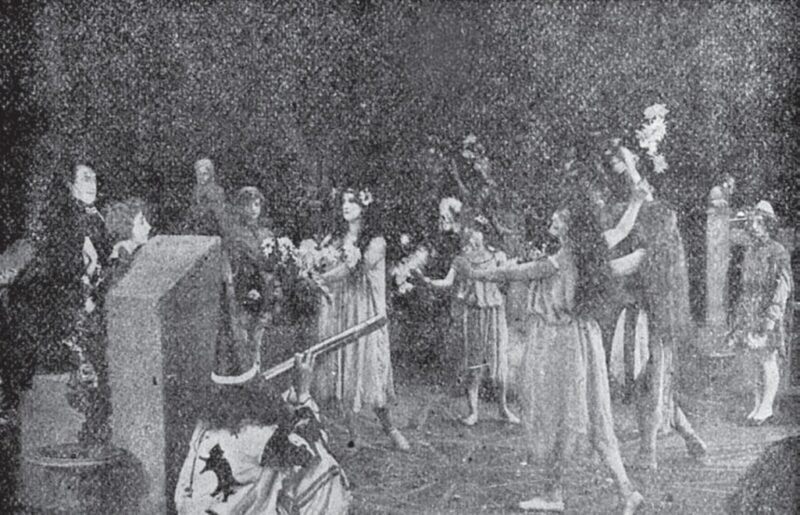In a quest to comprehensively grasp and gather data for my upcoming historical book on horror, I embarked on an adventure to watch all horror films dating back to 1930 and earlier. The foundational reason for setting my horizon at 1930 lies in the emergence of an entirely new era of horror with Universal Horror in 1931. Before 1930, all horror films, even those incorporating German Expressionism, were disparate and, more importantly, comprised films that did not fully encapsulate the essence of the horror genre. Post-1931, however, the production of films dedicated solely to horror began, coinciding with Universal Horror.
When evaluating the history of cinema, naturally, we progress through existing films. We establish the foundations of cinema by grounding ourselves in the earliest and most pivotal films. Yet, considering that many films we now speak of in high regard were once lost to time, it becomes apparent that the overlooked films should also be revisited and documented. Therefore, during my pre-1930 research, I scrutinized not only existing watchable films but also meticulously examined lost films that, for various reasons, have not reached us in the present day.
The Film Foundation, under the auspices of Martin Scorsese, posits a disconcerting statistic asserting that “half of all American films produced before 1950, and over 90% of films crafted prior to 1929, have irrevocably vanished into the annals of history.” A somber estimation by Deutsche Kinemathek paints a similar bleak picture, suggesting that a staggering 80–90% of silent films have been consigned to oblivion. This sentiment is accentuated by the film archive’s own repository, which enumerates over 3,500 films that have succumbed to the passage of time.
A comprehensive inquiry conducted by the Library of Congress unveils an alarming revelation, indicating that a daunting 75% of all silent films have met an unfortunate demise. While there exists a certain contention regarding the precise percentage, the impracticality of enumerating every lost film prevails, rendering attention only to the more prominent ones and those that can be traced to their origins. As an illustration, a mere fraction—approximately 200 out of a corpus exceeding 500 of Méliès’ cinematic creations, and 350 out of an expansive repertoire surpassing 1,000 films attributed to Alice Guy—endures as tangible remnants of a bygone cinematic era.
As evident, the number of lost films is quite substantial, and as new films come to light each day, a simultaneous discovery of new lost films unfolds. It is impractical to focus on every lost film. However, when a genre-based filter is applied, the figures significantly diminish. Particularly, when examining lost films within the horror genre, the numbers precipitously decline. The fundamental reason for this considerable reduction lies in the insufficient recognition accorded to the horror genre before 1930, precisely speaking, the incomplete conceptualization of the logic of horror films during that period. Therefore, 1931 marks a pivotal moment in the history of horror cinema.
Upon applying a filter encompassing the period from 1895 to 1930, the number of horror films I could trace amounted to 499. Unfortunately, of these 499 films, 314 find themselves in a state of loss. Over the span of 35 years, 23 different countries contributed to films falling under the categorization of horror; although some have endured to the present day, there are instances where not a single movie from certain countries has managed to reach us.
In my discourse, you will read about which countries produced horror films, how many of them have reached the present day, and how many remain lost. Similarly, you will encounter some crucial films that, if not lost, would have the potential to reshape the pages of cinematic history books.
I wish to emphasize a particular note: In my quest to discover lost films, I utilized the databases of Letterboxd and IMDb. While I state there are 499 films over a 35-year period, it is conceivable that this figure may have increased as I wrote this article, with the possibility of newly discovered films being added to catalogs. Likewise, though I claim to have reached 314 lost films, it is evident that this number is assuredly higher. My objective here is to construct an evaluation based on what I could access, attempting to demonstrate the value of lost films. The data presented in my writing, while subject to change in the future, already manages to be compelling.
Figures by Country
Australia
Australia, particularly after the 1970s, fully immersed itself in horror cinema. However, during the period from 1895 to 1930, the nation had only one horror film to its credit. While according to Letterboxd data, the initial Australian horror appears to be the 1964 production “The Road,” the IMDb database reveals the presence of the 1921 film “The Guyra Ghost Mystery.” Regrettably, “The Guyra Ghost Mystery” now resides among lost films. This film, recounting a true story, centers around a poltergeist narrative haunting a family.
Austria
Austria, notably dynamic in the early days of cinema, produced seven horror films over a span of 35 years. However, only one of these films has managed to reach the present day. Jacob Fleck and Luise Fleck’s 1921 production “Die Ahnfrau” (The Ancestress) stands as the sole surviving film from that era.
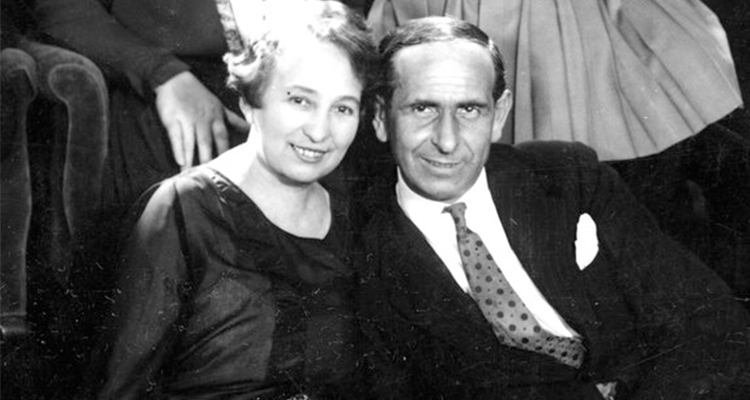
An additional note is noteworthy here. Despite being a collaborative directorial effort, it was uncommon for a woman to direct a horror film during those times. Following in the footsteps of pioneering American directors Alice Guy-Blache and Lois Weber, there were two women who ventured behind the camera in the subsequent 35 years. One was Alla Nazimova, director of “Salome” in 1922, and the other was Luise Fleck. Luise Fleck, who directed alongside her husband, helmed two of the lost films: “Three Tales of Terror” (1912) and “Anita” (1920).
Lastly, I’d like to mention that the 1921 film “Das grinsende Gesicht” (The Grinning Face), directed by Julius Herska, exists, but access to it requires special permission.
Belgium
Belgium, not particularly abundant in examples of the horror genre, made its full entry into horror cinema in the late 60s and early 70s. During the initial 35-year period, Belgium has only one film attributed to it. Unfortunately, the 1924 production “The Red Night,” which could be designated as Belgium’s first horror, is lost.
Canada
Canada, too, delved into horror in the 60s. Over the 35-year period, Canada has only one horror film to its name. The first Canadian horror film, “The Devil Bear,” made in 1929, is regrettably among the lost films.
China
According to Letterboxd data, the first Chinese horror film is the 1927 production “The Cave of Silken Web.” The film has successfully reached the present day and is notably commendable for its period-appropriate effective horror, particularly in its finale. However, according to IMDb data, the first horror film is the 1913 production “Huo wu chang,” which is currently in a lost state. Out of the three horror films produced by China over the 35-year period, only one has successfully endured to the present day.
Czechoslovakia
According to Letterboxd data, the first Czechoslovakian horror is the 1921 production “Arrival from the Darkness,” which remains accessible today. However, according to IMDb data, the first horror film appears to be the 1920 production “Sílený lékar,” unfortunately now lost. Out of the four horror films produced in Czechoslovakia over the 35-year period, only one has successfully reached the present day.
Denmark
Denmark, a country consistently active in cinema throughout its various eras, made its foray into the horror genre in the 1960s. Despite their introduction to horror, particularly excelling in drama films during the early stages of cinema, Denmark seems to have experimented with and eventually moved away from the horror genre. While possessing five horror films over the 35-year period, only one of these five films has managed to endure to the present day.
France
France, a nation that dominated the early years of cinema, including the horror genre. Despite historical accounts consistently highlighting the name of George Méliès, France boasts other directors such as Segundo de Chomón, and many more whose value remains unknown, awaiting discovery.
In the annals of cinema history, the mention of the first horror film often conjures the name George Méliès. While the claim to having the first horror film is not entirely accurate, Méliès stands out as the singular figure who initiated the horror genre. His movies, particularly those filled with fantasy, creatures, and demons, laid the foundation for this genre.
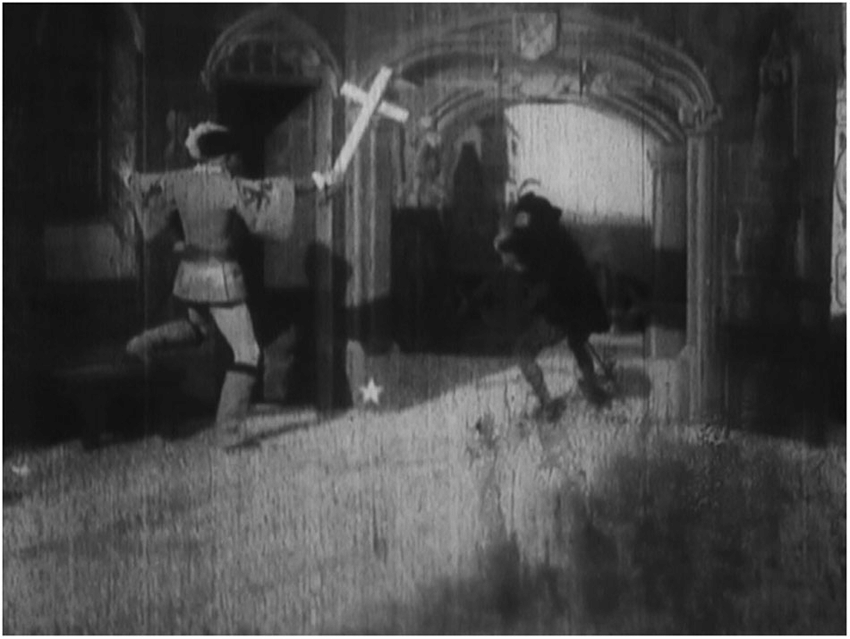
Over the 35-year period, France has a total of 68 horror films, with 21 attributed to George Méliès. It is essential to note that, despite many films being labeled as horror, particularly on IMDb, not all of them truly fall into the horror genre. The reason for the addition of the horror label lies in the films’ distinct style compared to others of the time and their incorporation of creatures, demons, and fantastical elements—perhaps with the intention to induce fear.
Out of these 68 films, unfortunately, 20 are lost. The 1896 productions “Le manoir du diable” (The Haunted Castle), “Le Cauchemar” (A Nightmare), and “Une nuit terrible” (A Terrible Night) are regarded as France’s first horror films. All three are attributed to George Méliès. However, due to the unknown release dates of “Le Cauchemar” (A Nightmare) and “Une nuit terrible” (A Terrible Night), it remains unclear which was presented first.
Georgia
Over the 35-year period, Georgia has produced only one horror film. The 1925 production “The Case of the Murder of Tariel Mklavadze” has successfully reached the present day.
Germany
Germany, akin to significant countries of the time, such as Denmark and France, was a noteworthy player in the cinematic landscape. Similar to France, Germany held a reverence for horror, producing 58 horror films over the 35-year period. Regrettably, 30 out of these 58 films are now lost. As one might speculate, the central reason for the loss of these 30 films could be the country’s unfortunate centrality to the focal points of the world wars.
The inaugural horror film, “The Coroner’s Mistake,” crafted in 1907, has, unfortunately, succumbed to the tides of time. The first German horror film that has reached the present day is “Der Golem,” a production from 1915. However, it is crucial to note that the renowned Golem film was made in 1920.
Among the lost films up until 1915 are “Ein seltsamer Fall” (A Strange Case), “Sein eigner Mörder,” “Die Eisbraut,” “Der Schatten des Meeres” (Specter of the Sea), and “Das dunkle Schloß.” “Alraune, die Henkerstochter,” produced in 1918, has survived to the present day but resides in the Eastman Museum archives and can only be viewed with special permission.
Hungary
Hungary holds a significant place in the history of horror cinema. Despite contributing four horror films over the 35-year period, all these films are unfortunately lost. However, one of these films, “Drakula Halala,” made in 1921, might be considered the earliest incarnation of Dracula in cinematic history. While the recognized first Dracula film is “Nosferatu” from 1922, delving into history reveals that “Drakula Halala,” despite being lost, stands as the initial Dracula film. You can read the detailed research I have written about the film for more information.
Italy
Italy, renowned for its historical films with grand sets, has 16 out of 25 horror films lost. Among these losses is the country’s first horror film, “Cuore Di Mamma,” crafted in 1909. Having directed 29 movies, the director Luigi Maggi has lost nearly all his work, a subject worthy of a separate article.
Japan
Japan holds the second position on the list of lost films, with only two out of 118 films reaching the present day. The two surviving horror films are the 1899 kabuki play adaptation “Momijigari” and the 1926 classic “A Page of Madness.” The first Japanese horror film is enigmatic, with four horror films recorded in 1898. However, lacking data, I cannot determine which was presented first.
Netherlands
The Netherlands has two horror films attributed to it. The first horror film, “De Greep” (The Grip), made in 1909, has reached the present day, while the 1914 production “Het geheim van het slot Arco” has unfortunately not survived.
Philippines
The Philippines successfully entered the horror genre before the 1930s. The first horror film, “Ang Manananggal,” made in 1927, is, unfortunately, lost.
Poland
Over the 35-year period, Poland has four horror films, all regrettably lost. The first Polish horror film, directed by Wiktor Bieganski in 1921, is “Pan Twardowski.”
Finland
Finland is among the countries producing horror films. The 1927 production “Noidan kirot” (Curses of the Witch) is among the movies that have endured to the present day.
South Korea
The final entry from Asia is South Korea. They, too, have delved into horror film production. The 1928 film “Three Beggars” (Samgeol-in), unfortunately, has not reached the present day.
Spain
Spain, while eventually becoming a stronghold for horror cinema, was not particularly active in its early stages. The 1912 production “Superstition Andalouse” (Andalusian Superstition), which could be considered the first Spanish-made horror film, was directed by Segundo De Chomon and released in France. Therefore, it wouldn’t be entirely accurate to label it as the first Spanish horror film. This brings us to the country’s sole horror film of the time, the 1919 production “El Otro.” Adapted from Eduardo Zamacois’s book of the same name, the film was directed by José María Codina, with Eduardo Zamacois, the author of the book, also involved. The 1930 film “The Will of the Dead Man,” while in the Spanish language, is of American production.
Sweden
Sweden is among the countries venturing into horror films. Although only four films were crafted in the 35-year period, they added two classics to the horror cinema. While the first horror film, the 1911 production “En sann historia från Fläsian eller Gubben X, kikaren och albusken,” is lost, Victor Sjöström’s “The Phantom Carriage” and Benjamin Christensen’s “Häxan” have endured to the present day, being regarded as classics. When the directors found success with their films, they entered Hollywood’s radar and subsequently moved to America. With their departure, no horror films were made in the country for two decades.
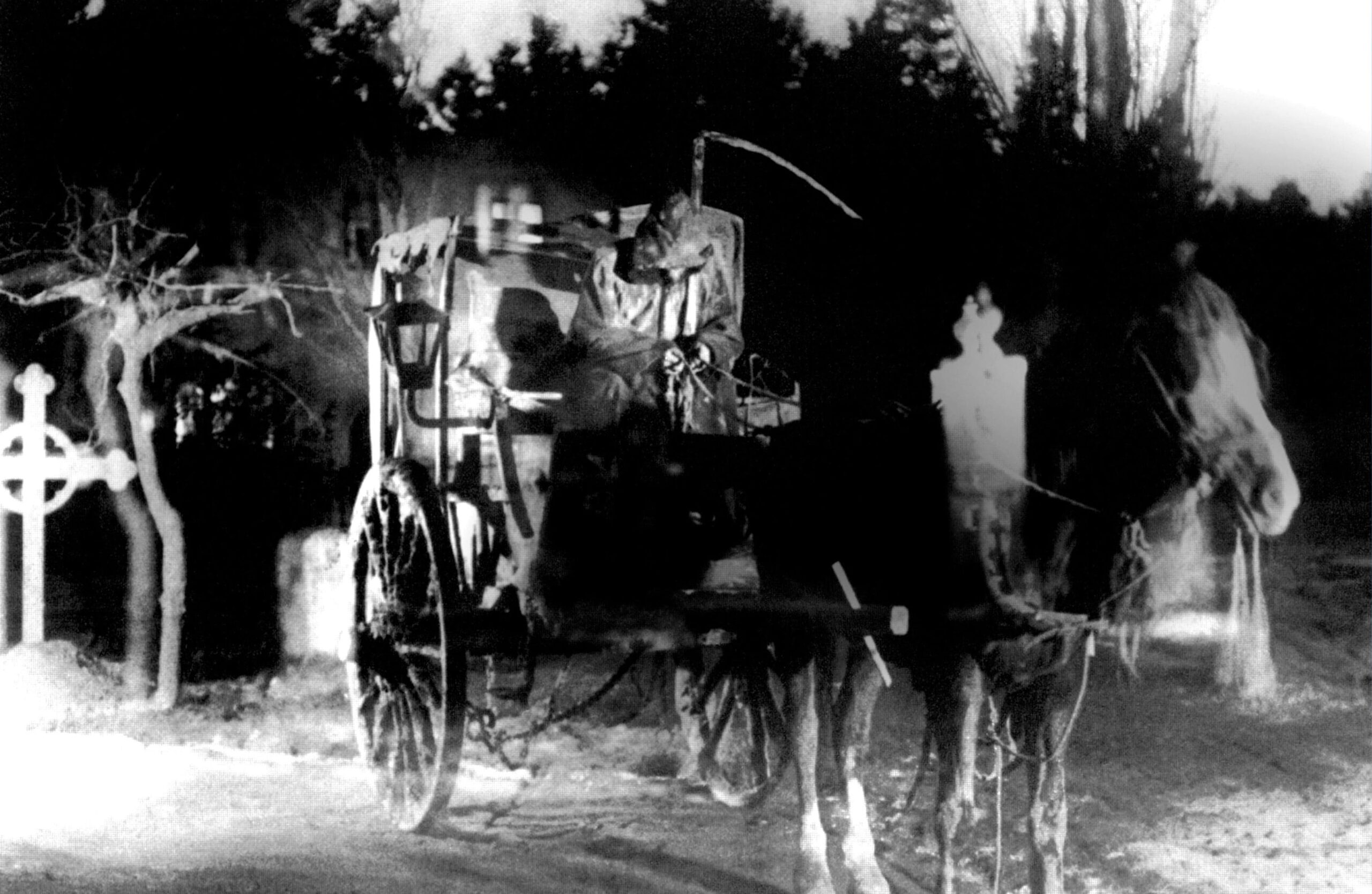
The United Kingdom
The United Kingdom is associated with 34 horror films; unfortunately, 23 of them have been lost. The first horror film for the UK could be considered the 1897 production “The X-Ray Friend.” Although “The Haunted Castle” was also presented in the same year, “The X-Ray Friend” was shown in October, while “The Haunted Castle” appeared in December. Both films belong to George Albert Smith.
USA
Unsurprisingly, the USA tops the list. While 141 horror films were crafted over the 35-year period, 71 of them are lost. America might have also pioneered the first-ever horror film in cinema history. Alfred Clark’s film “Execution of Mary, Queen of Scots,” introduced to the audience on August 28, 1895, through Edison’s Kinetograph, depicts the beheading of Queen Mary. The one-minute film might have instilled fear or startled the audience due to its departure from the conventional everyday lifestyle prevalent in the moving images disseminated by Edison’s Kinetograph. Interestingly, Edison’s films also featured some of the earliest gay characters, prompting contemplation about the film’s implications.
Many sources do not categorize “Execution of Mary, Queen of Scots” as the first horror film. However, the presence of a beheaded woman in its content might have evoked fear and shock in the audience. Considering that the concept of moving pictures was still in its infancy, it seems plausible that the audience experienced fear. If we accept the film as the first horror film, it marks the first victim in a horror movie was a woman.
USSR
Although the Soviet Union contributed to 14 horror films, unfortunately, 8 of them are lost. The first horror film, the 1909 production “Вий” (Viy), is also among these lost films.
Important Lost Movies
Dr. Jekyll and Mr. Hyde
“Dr. Jekyll and Mr. Hyde” stands as one of the most frequently adapted works in cinema. With its underlying tension and murder narrative, the story managed to deliver the anticipated excitement to the audience, making it one of the early preferences for the cinema screen. However, a significant portion of the adaptations made over the 35-year period are now lost. The initial adaptation of “Dr. Jekyll and Mr. Hyde” dates back to 1908. Directed by Otis Turner, the film starred Hobart Bosworth. Unfortunately, the movie is lost, and its existence remains uncertain.
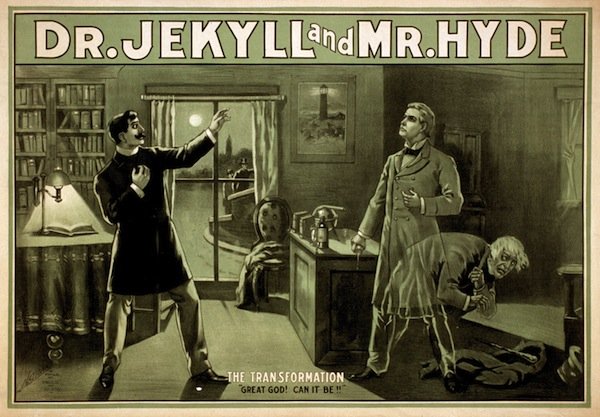
Robert Louis Stevenson’s work has been adapted nine times during this 35-year period, with six of these films lost. Following the lost first film in 1908, the second film, produced in 1910, is also among the losses. The first adaptation that has reached the present day is the 1912 film directed by Lucius Henderson.
The Italian version, “The Other Me,” and the German version, “The Head of Janus,” are also, unfortunately, among the lost adaptations.
The Picture of Dorian Gray
“The Picture of Dorian Gray” is also one of the most adapted works in cinema. Although Oscar Wilde’s famous work has been adapted five times over the 35-year period, only the 1915 version has survived. The UK version, the Hungarian version featuring Bela Lugosi, and the USSR versions are, regrettably, among the lost.
Vampires
Vampires are an integral part of cinema. I have written a detailed article on the place of these immortal beings in cinema. I recommend reading it. The first vampire in cinema might be featured in George Melies’s 1896 film, “The Haunted Castle.” While the character’s possession of a cape and subsequent transformation into a bat serves as an example of Dracula’s traits, it is challenging to definitively state anything.
In the 1910s, horror films began to diversify, with vampires becoming part of this variety. However, none of these films have survived to the present day. The 1913 production “The Vampire” could be the first vampire adaptation in cinema. Similarly, the 1915 Russian production “Zhenshchina vampir” is lost. The 1916 film “The Kiss of a Vampire” is also among the lost.
Mummy
Unfortunately, the first mummy adaptations in cinema are also among the lost. George Melies’s 1898 film “Cleopatra’s Tomb” could be the first mummy film in history. Although the film is lost, we gather the impression that the storyline involved a mummy. The first film, explicitly named “The Mummy,” is the 1911 production, and this film, too, is among the losses. The 1914 film “The Egyptian Mummy,” despite having ‘mummy’ in its title, does not have much relevance to mummy films. The 1918 production “Mercy, the Mummy Mumbled” contains a mummy but does not offer sufficient commentary since the entire film has not reached the present day.
Frankenstein
Frankenstein is relatively fortunate in the list of losses. The first adaptation, directed by J. Searle Dawley in 1910, has reached the present day. However, this 1910 film differs significantly from Frankenstein, introduced to us by Universal Horror in 1931. While it incorporates elements from Mary Shelley’s work, the storyline is quite different. The most intriguing feature of the 1910 Frankenstein is that it was lost until the 1950s.

Out of the three adaptations of Frankenstein in the 35-year period, two films featuring the character are unfortunately lost. The 1915 film “Life Without Soul” and the 1921 Italian production “Il Mostro di Frankenstein” are among the losses.
Werewolf
Regrettably, werewolves, like other legends, are part of this list. The historically first werewolf film, the 1913 production “The Werewolf,” is lost. Three films featuring werewolves, akin to other creatures, were crafted during the 35-year period. However, these films do not embody the werewolf feature that Universal Horror introduced to us in “Werewolf of London” in 1935. The initial and lost film from 1913 narrates a Native American story. The other two films, the surviving 1925 production “Wolf Blood” and “The Bear’s Wedding,” have reached the present day. Nevertheless, these two films do not tell a classic werewolf transformation story.
Some Important Details
• George Melies’s 1898 production, “The Cave of the Demons,” boasts the distinction of being the first film in history to utilize Double Exposure.
• The 1902 film “Maria Marten: or, The Murder at the Red Barn” stands as the first horror film adapted from a real murder story.
• The 1905 production “The Freak Barber” might be the first film depicting a death of a Black character.
• In 1909, “The Grey Dame” marked the first adaptation of Sherlock Holmes in the horror genre.
• The initial adaptation of Sleepy Hollow emerged in 1911. Unfortunately, the film is lost.
• The 1913 film “The Bells” features the first Jewish murder.
• The first adaptation of “The Murders in the Rue Morgue” dates back to 1914.
• The 1916 film, the first adaptation of “The Phantom of the Opera,” is also lost.
• The 1919 production “Lilith und Ly” holds the distinction of being the first Lilith adaptation in cinema history.
• “A Son of Satan,” released in 1925 and directed by Oscar Micheaux, marks Oscar as the first Black horror director. He is not only recognized for his contributions to the horror genre but also stands as the sole known figure of that era who successfully engaged in filmmaking.
Sources and Further Information
- Slide, Anthony. “Nitrate Won’t Wait: A History of Film Preservation in the United States,” McFarland (2010): p5
- Biswas, Soutik. “Alam Ara: Search for the lost film that gave birth to Bollywood,” BBC (2022)
- Mikesell, Terry. “Group’s Rescue Of Old Fılms Preserves Glımpse Into Past,” Film-Foundation.org (2017)
- Ohlheiser, Abby. “Most of America’s Silent Films Are Lost Forever,” The Wire (2013)
- Lost Films
- Letterboxd Database
- IMDB Database
